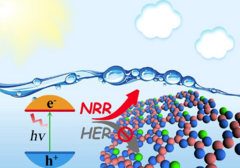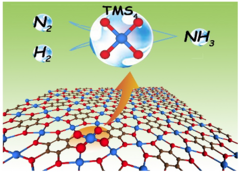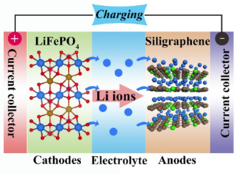Dr. Xingshuai Lv

Fields of interest | Electrochemistry, electro- and photocatalysis water splitting and nitrogen reduction reactions |
| Publications | Semantic Scholar |
Research
Research interests are in the areas of computational materials science, theoretical solid-state physics and theoretical chemistry, with a particular emphasis on materials modeling and simulation using the first-principles calculations. The theme of my research is to study structural, electronic, optical, and catalytic properties of 2D materials, aiming to understand, predict, optimize materials properties and design novel functional materials. They include but not limited to the following research fields: Engineer electrode materials for lithium-ion and lithium-sulfur batteries; Design and develop efficient photo/electrocatalysts, including HER, OER, ORR and NRR.
Metal-free photocatalyst for highly efficient N2 fixation and reduction

Conversion of naturally abundant dinitrogen (N2) to ammonia (NH3) is one of the most attractive and challenging topics in chemistry. On the basis of the “σ donation−π* back-donation” concept, single B atom supported on holey g-CN (B@g-CN) can serve as metal-free photocatalyst for highly efficient N2 fixation and reduction under visible and even infrared spectra. Our results reveal that N2 can be efficiently activated and reduced to NH3 with extremely low overpotential of 0.15 V and activation barrier of 0.61 eV, lower than most of metal-based NRR catalysts, thereby guaranteeing low energy cost and fast kinetics of NRR. Moreover, for the first time, we theoretically disclose that the external potential provided by photogenerated electrons for NRR/HER endowing B@g-CN spontaneous NRR and inaccessible HER. This work may provide a promising lead for designing efficient and robust metal-free single atom catalysts toward photocatalytic NRR under visible/infrared spectrum.
High throughput screening of electrocatalysts for ammonia synthesis

The development of two-dimensional (2D) organic catalysts with intriguing catalytic activity for the nitrogen reduction reaction (NRR) still remains challenging. Here, we exploit a series of experimentally feasible nitrogen-free metal–organic frameworks (MOFs) of transition metal–benzenehexathiol (TM–BHT, with TM being Sc, Ti, V, Cr, Mn, Fe, Co, Ni, Cu, Zn, Mo, Ru, Rh, Pd and Ag) for dinitrogen (N2) fixation and ammonia (NH3) synthesis. Through the first-principles screening and microkinetic analyses, we find that TMS4 centers can serve as electron reservoirs for associative N2hydrogenation to overcome energy efficiency versus rate trade-offs. It turns out that among these candidates, Mo–BHTexhibits the lowest limiting potential and highest turnover frequency (TOF) competitive to that of benchmark Fe catalysts. In light of the synergistic effects between active center and ligand, the high performance of Mo–BHT toward NRR was rationalized.
High energy density anodes for lithium-ion battery

Silicon (Si) has been regarded as one of the most promising next-generation lithium-ion battery (LIB) anodes due to its exceptional capacity and suitable working voltage. However, dramatic volume expansion during charge/discharge processes and poor electrical conductivity cause severe detrimental consequences, greatly impeding the performance of Si-based LIB anodes. On the other hand, graphite as the widely used anode presents good stability and electrical conductivity, however, the low capacity around 372 mAhg-1 are far from satisfactory. Herein, to combine advantages of silicon- and carbon-based materials for anodes, we propose novel LIB anodes based on the concept of constructing Si/C composites. In this work, we find that emerging two-dimensional (2D) g-SiC2 and g-SiC3 (known as siligraphenes) could not only preserve the high capacity and low electrode voltage from silicon, but also inherit the good stability and electrical conductivity from graphite.
